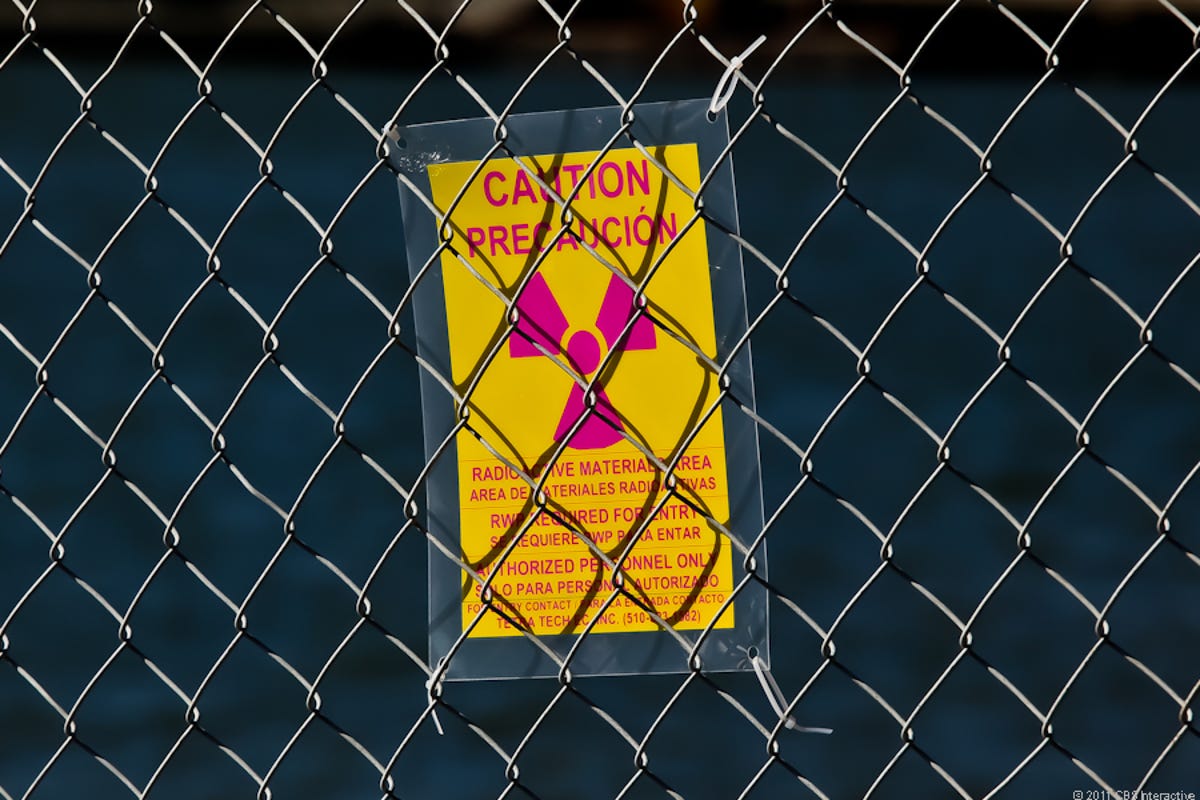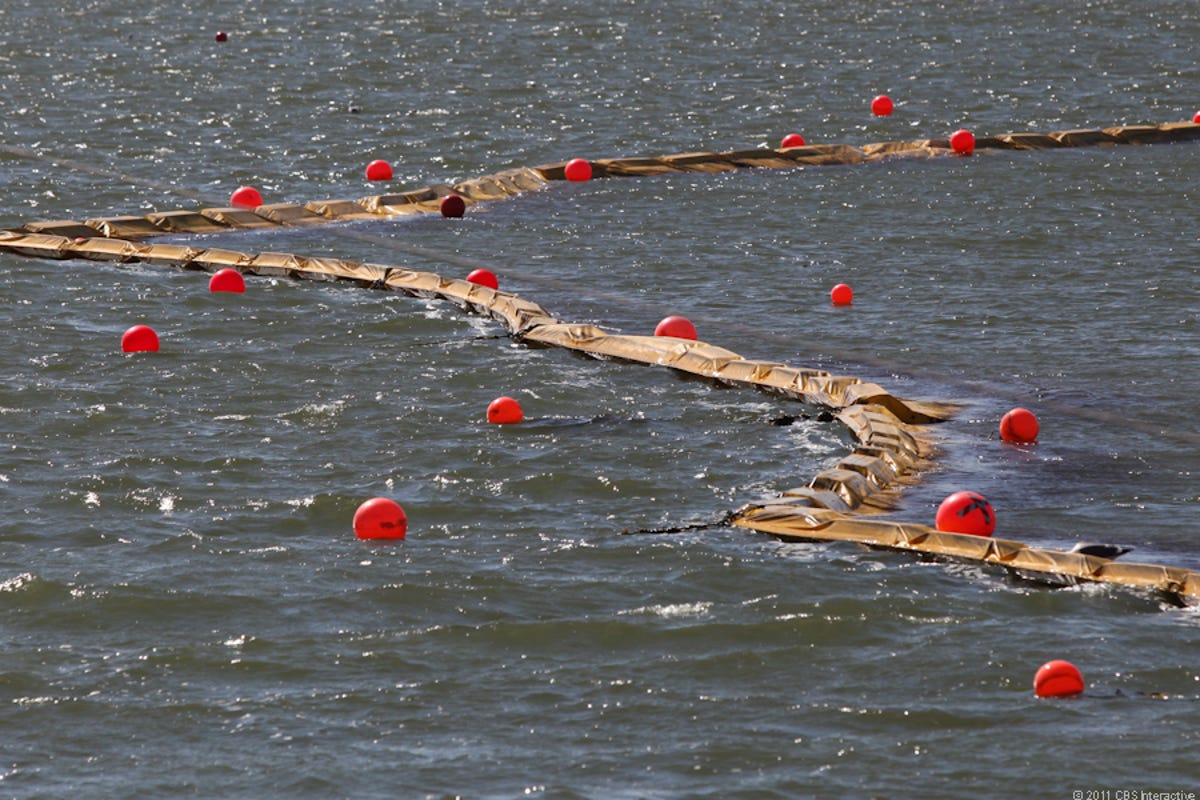Navy works to clean up years of toxic pollution (photos)
The former Naval Air Station Alameda in the San Francisco Bay is targeted for environmental remediation.

Radioactivity placards
Under legislation called the Navy Comprehensive Environmental Response, Compensation and Liability Act, the Seaplane Lagoon here at the former air station has been given priority for environmental cleanup following years of neglectful dumping of toxic chemicals from military operations.
Remediation at the station
The station now can resemble a military ghost town, with its dilapidated housing, broken windows, massive warehouses, and crumbling concrete foundations.
More than 10 years ago, the Navy closed the station, leaving behind a degrading WWII infrastructure of runways, maintenance hangars, and weapons laden with chemical contaminants.
The estimated cost for this remediation work is $25 million, with funding coming from the Department of Navy, said Derek Robinson, who serves as the Defense Base Closure and Realignment Environmental Coordinator for the former Navy Air Station (NAS) in Alameda.
Earthmover
Here, an earthmover wades through the sludge dredged from the bottom of Seaplane Lagoon. The sludge is being dried in a holding tank and will then be "dried on site, the sediment will be tested (characterized) and sent off-site for disposal at any appropriate facility. The sediment will not be cleaned," Robinson said.

Seaplane Lagoon
Dredging barges and a tugboat
As the city works to redevelop it, one of the most pressing elements is the cleanup of the toxic chemicals leaked into the land throughout the years of military operations.
Earth mover
Site 17
Prior to its closure, NAS Alameda was the home port for two nuclear carriers and two nuclear cruisers. NAS Alameda is a National Register-eligible World War II Historic District and is currently home to the USS Hornet Museum, a ship rich with military history and well known as the recovery vessel for the Apollo 11 and 12 capsules.
Superfund site
The program focuses specifically on two areas within the Alameda Naval Air Station site: Seaplane Lagoon, called Site 17, and a landfill on the western tip of the island known as Site 1, where the Navy disposed of chemical waste.
Here's a close-up view of the silt dredge from Site 17 as it dries in the sun.
Dredging areas
The dredging areas will be surrounded by turbidity curtains to prevent the release of suspended sediment, and the dredging will be conducted with specially designed environmental dredging equipment.
Radium
The soil being dredged contains cadmium, chromium, lead, polycholrated biphenyls, DDT, and other pesticides, the Navy says. Runoff from nearby Building 5 has also deposited low levels of radium 226 in the lagoon. Radioluminescent paint consisting of radium 226 was used during World War II to paint plane dials for nighttime visibility.
Six-Phase Heating
Between 2004 and 2009 a technique called Six-Phase Heating used large-scale electrodes embedded beneath the ground surface to heat groundwater to about 200 degrees Fahrenheit.
During this process, the volatile organic compounds (VOCs) in soil and groundwater were released as vapor that was removed through a vacuum system.
Between July 2004 and February 2009 more than 3,250 pounds of contaminant were removed, resulting in a 99.9 percent reduction in VOC concentrations.
Other techniques used on site have included a bioremediation process which uses microscopic bugs to digest harmful chemicals, and in July 2008 the Navy began dual-phase vacuum extraction (DVE), to remove liquid and vapor contamination.
The DVE system has removed nearly 85,000 pounds of gasoline from the groundwater, and an air sparge system was used to remove the gasoline compounds dissolved in groundwater, and by the time this phase of cleanup ended, more than 120,000 pounds of petroleum hydrocarbons were removed.

